Best Social Media Automation Tools for 2025
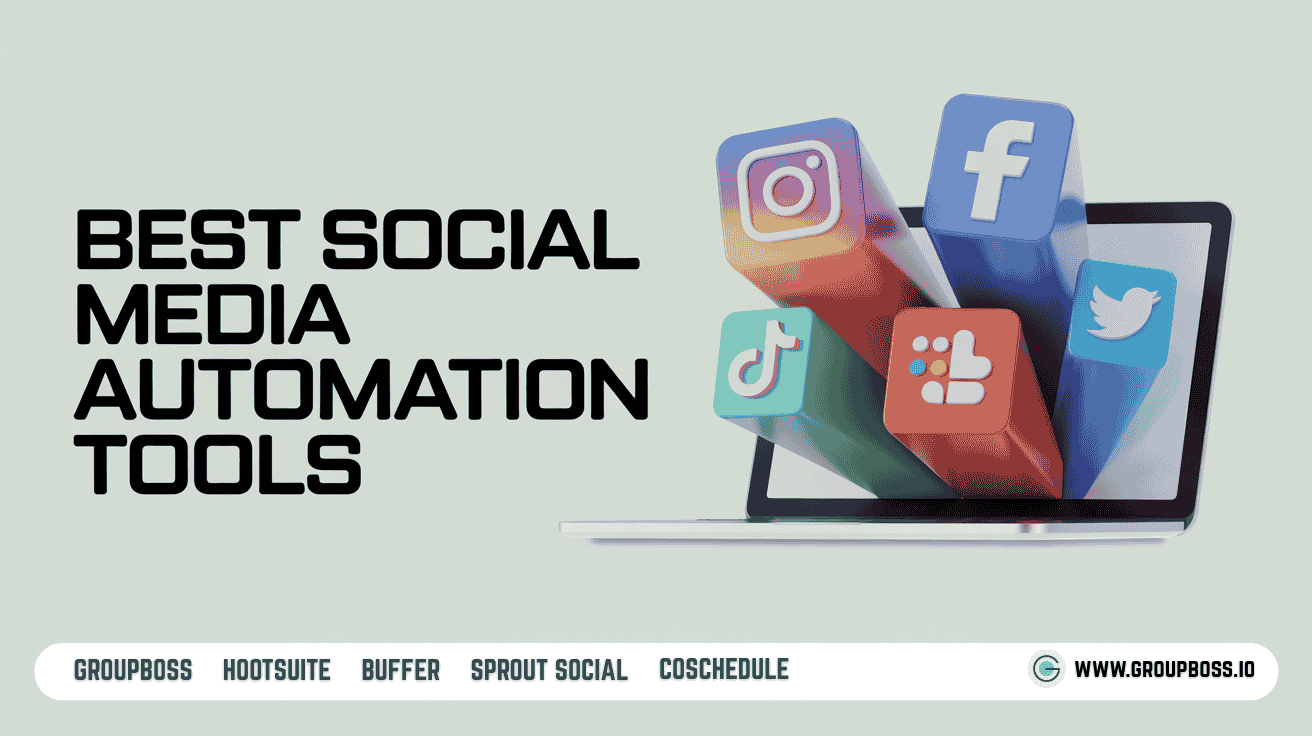
The best way to manage your social media profiles, pages, or groups and communities in 2025 is with social media automation tools. Otherwise, you might end up wasting more time managing the social media platforms than using them to grow your business, establish your brand, or run client accounts.
You need them—whether you’re trying to automate scheduling, collect leads from social media platforms, run an email campaign, manage a Facebook group or page, oversee client accounts, avoid spam, find out insights and analytics for growth, maximize social media reach, engagement, visibility, and actually get output!
Additionally, without the use of social media automation tools, managing your platforms can feel overwhelming.
So, without any delay, let’s look at some of the best social media automation tools in 2025 that are actually worth your time. In this blog post, we'll share those tools to help you make the most of your social media strategy in 2025.

What are Social Media Automation Tools?
Just think about driving a car while you're on a call and trying to eat with the other hand—almost impossible. That’s how it feels to manage your social media platforms without the help of automation tools nowadays.
But what are these social media automation tools?
They’re the tool that helps you save time, stay consistent, and automatically handle tasks like posting, tracking performance, replying to messages, and finding what’s working – these are automation tools.
In short, anything that takes a repetitive task off your plate and lets you focus more on strategy or connection could be termed a social media automation tool.
Take for example, Groupboss automation tool for lead collection. It helps you capture new member details from your Facebook group and send them straight to your email marketing list or CRM. That way, you don’t have to manually copy and paste names and emails all day.

Not all automation tools do the same thing.
For instance, some social media automation tools are better suited to managing multiple accounts, while others may be more focused on analytics and reporting, and what’s just taking up space on your feed.
That’s why it helps to know what your priorities are before you pick a tool:
- Running a one-person show? There are lightweight options made just for you.
- Part of a bigger team? Some platforms let you assign roles, approve content, and keep everyone on the same page.
- If you’re in e-commerce or B2B, there are even tools with features designed specifically for your space.
Likewise, some are designed for large enterprises and others are geared towards small businesses or individual users. Moreover, some are best suited to particular businesses, such as e-commerce or B2B, while others are more generalist in nature.
Best Social Media Automation Tools in 2025
Some automation tools are best for lead collecting, some are for auto scheduling, posting, or commenting, and some are suitable for running your email campaign smoothly.
Considering the market trends and user demands, here are some of the best social media automation tools to manage consistently, saving time, and money to skyrocket your business's online presence and ultimately brand growth.
Groupboss
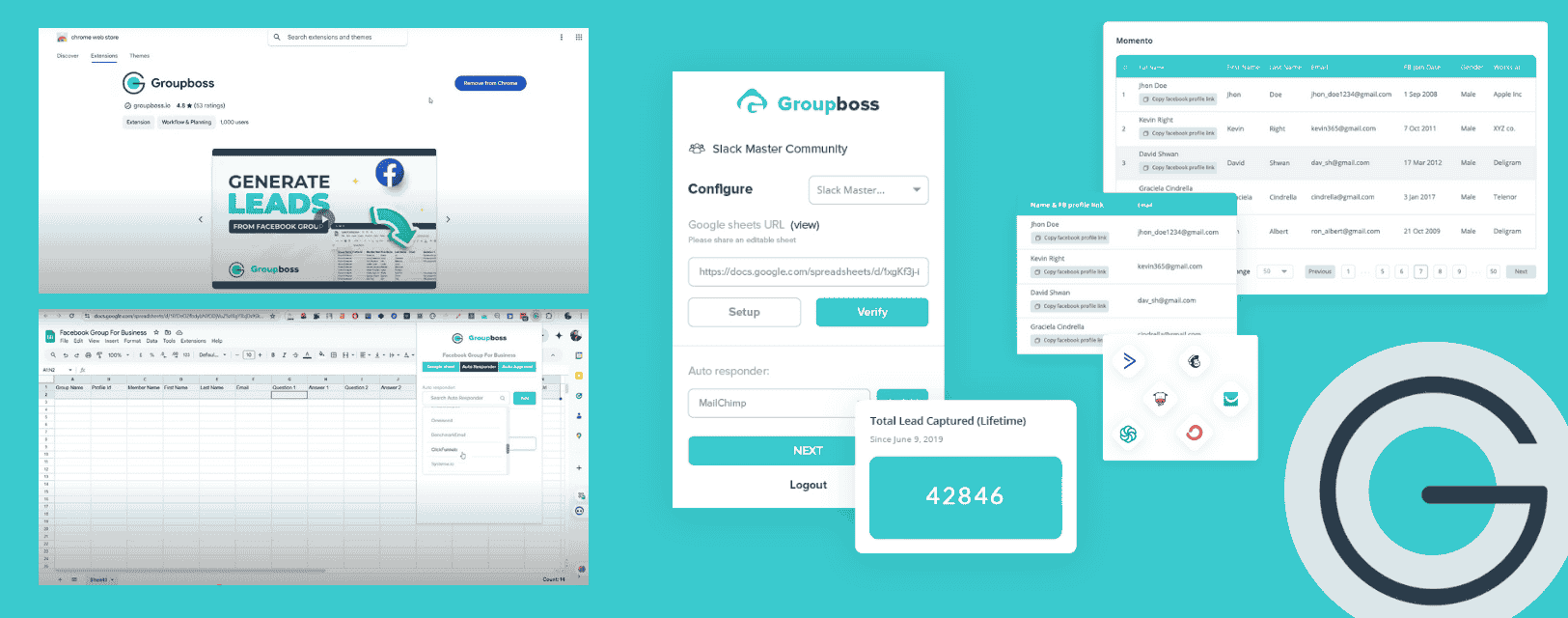
One of our clients runs a Facebook group for career coaching. When they first started, they were thrilled to see people joining every day. But soon, they found themselves buried in busywork—copying join question answers on Excel Sheets, trying to organize emails, and constantly switching between tabs just to keep up.
Once they started using Groupboss, that changed.
Now, every time someone joins their group, the member’s email goes straight into their Google Sheet and email platform—without any manual work. It's a small change that saved them hours each week.
Groupboss is a simple automation tool for Facebook group admins who want to collect leads consistently, without the daily grind.
By using Groupboss, you can automate to save the answers in a Google sheet, dashboard, and the emails in the email marketing autresponders.
Pros of Using Groupboss
- Automatic lead collection
Captures join question responses as soon as a new member is approved. - Google Sheet integration
Syncs new leads in real-time to your chosen spreadsheet. - Email marketing tool support
Connects with tools like GoHighLevel, ConvertKit, Mailerlite, Mailchimp, Sendpulse, Snov.io, ActiveCampaign, ClickFunnels, Lemlist, Klaviyo, Moosend, Drip, Pabbly, and others (30+ integrations). - Free-trial
Comes with a 7-day free trial for any package your purchase. - Refund policy
One of the very few social media automation tools that have a refund policy. They have a 14-day refund policy for all of its packages. - 24/7 Support
Groupboss might have the best support team among all of its competitors, having a 4.7 rating in the Chrome web store. - Audience targeting features
Helps you build Facebook custom and lookalike audiences using your data. - Easy data export
Download your leads anytime in Excel or CSV format.
Cons of Using Groupboss
- Facebook-focused
It only works with Facebook groups, so it’s not meant for other platforms. - Chrome web extension
This is not a desktop software rather a Chrome web extension. Without the Chrome browser, it can't be used. - Entry-level plan limits
The monthly plan is for a single group, which might feel restrictive for managers running more. - More suited for business-focused groups
If your group isn't set up to collect leads, you might not need this kind of automation.
Groupboss Pricing
- $45/Quarterly – Add up to 3 Facebook groups.
- $99/Yearly – Add up to 3 Facebook groups.
- $189/Yearly (Mega Plan) – Add up to 20 Facebook groups.
If you're using your Facebook group to grow an email list or bring in clients, it's a smart way to cut the manual work and stay organized.
Hootsuite
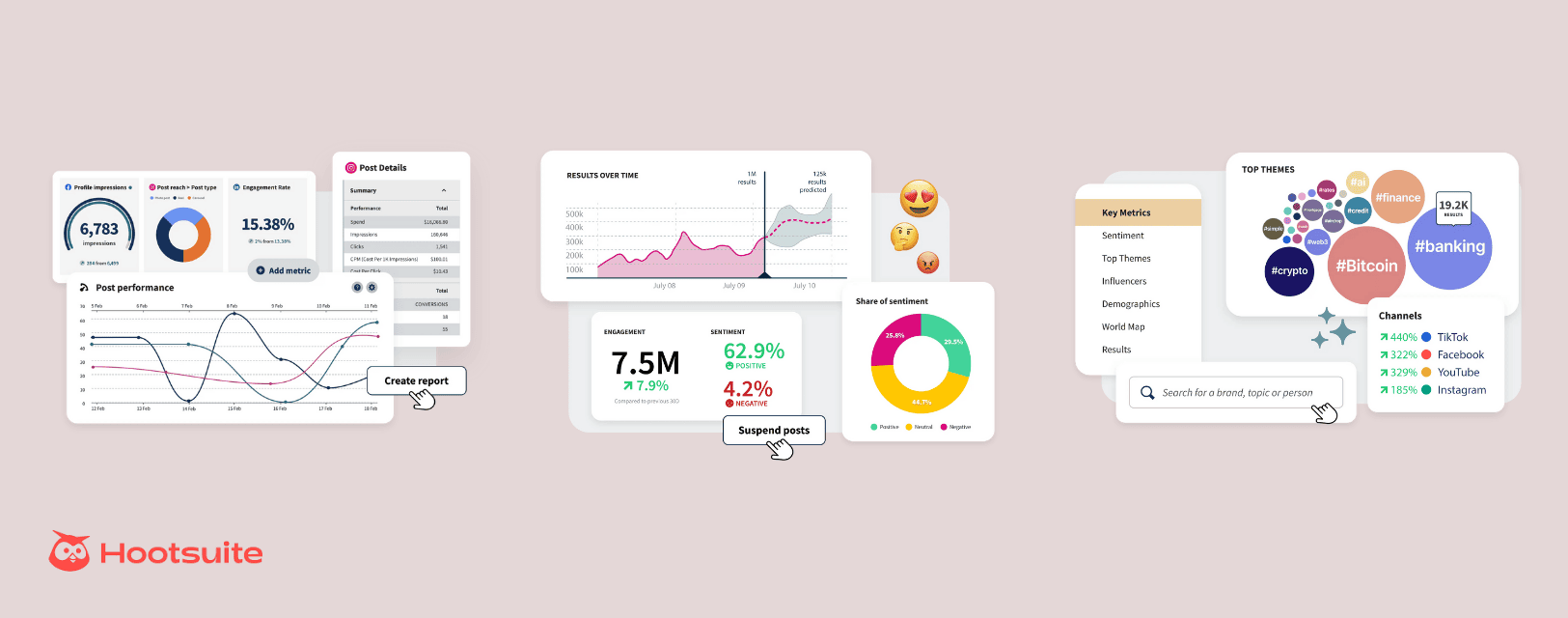
Hootsuite has over 16 million users in over 175 countries around the world!
Hootsuite is one of the most widely used social media automation tools, and it’s easy to see why. It brings together planning, posting, and performance tracking across multiple platforms—all in one place.
If you’re managing several social channels and need a tool to stay organized, Hootsuite can make the job a lot less stressful. From scheduling content to checking what’s getting attention, it helps you stay consistent without logging in and out of five different tabs.
Pros of Using Hootsuite
- Multi-platform support
Handle Facebook, Instagram, X (formerly Twitter), LinkedIn, Pinterest, and more—all from one dashboard. - Visual post calendar
Plan your content ahead of time with a drag-and-drop calendar that’s easy to manage. - Built-in analytics
Get a clear view of how your content is performing—engagement, reach, and more. - Team management tools
Assign tasks, review posts, and manage approvals when working with others. - Content inspiration
Find relevant posts and trends to keep your content ideas flowing.
Cons of Using Hootsuite
- Pricey for beginners
Plans can get expensive fast, especially if you're adding team members or multiple accounts. - Interface can feel a bit dated
Compared to newer tools, it’s not the most modern or intuitive at first glance. - Limited automation depth
Some workflows still require more hands-on steps than you’d expect.
Hootsuite Pricing (as of 2025)
- Professional – $99/month (1 user, up to 10 social accounts).
- Team – $249/month (3 users, up to 20 accounts).
- Enterprise – Custom pricing (advanced features and larger teams).
While it may not be the most affordable choice, Hootsuite is solid if you’re managing multiple accounts and want everything in one spot.
SocialPilot
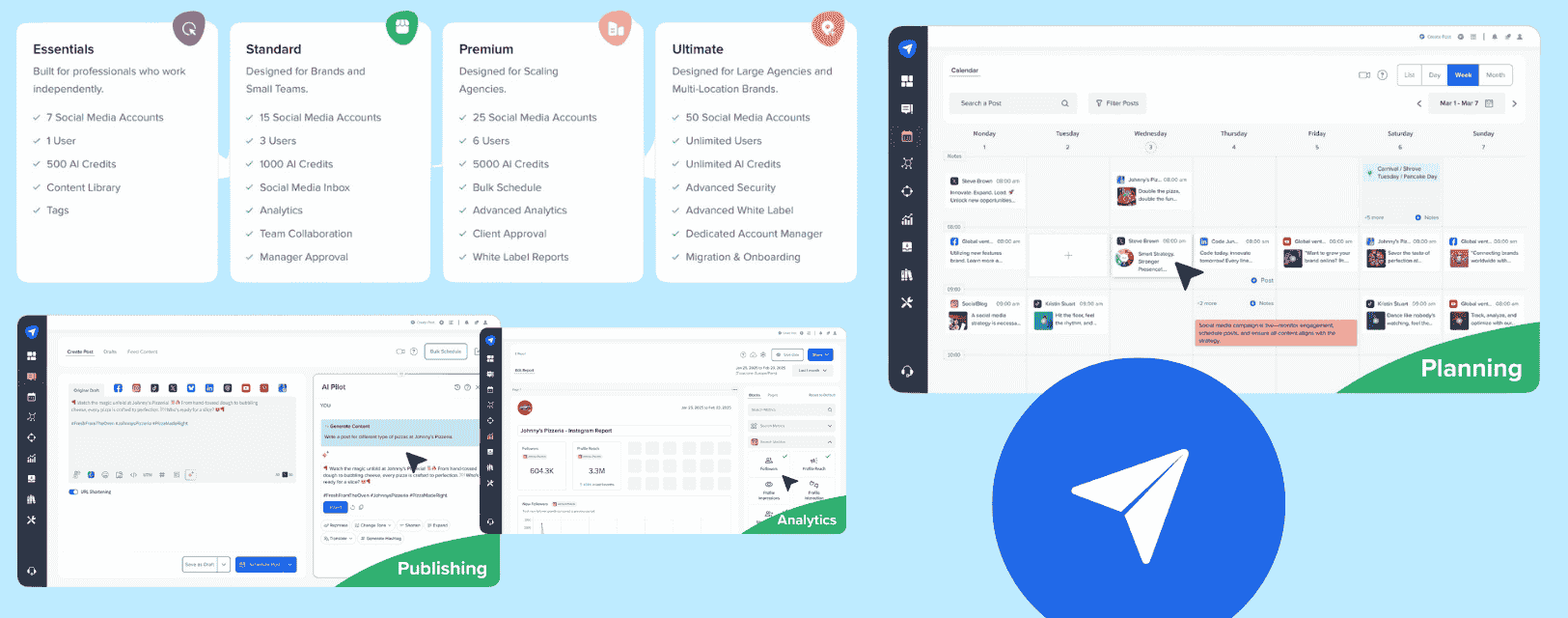
One of the verified reviewers on G2, who has been using SocialPilot to manage content across eight different social accounts, stated that “everything about SocialPilot makes scheduling your content easy… the price point is perfect, and integration couldn’t be simpler.”
Makes sense why so many entrepreneurs, small teams, and growing agencies lean on it to stay organized.
SocialPilot is built for businesses that need more than just a basic scheduler. It’s a full suite for planning, publishing, collaborating, and reporting—without the clutter. Whether you're scheduling weekly posts, working with clients, or managing approvals, it keeps things running smoothly in the background while you focus on the bigger stuff.
Pros of Using SocialPilot
- Easy-to-use dashboard
The interface is clean and intuitive—even if you’re managing dozens of accounts, it doesn’t feel overwhelming. - Bulk scheduling and drag-and-drop calendar
You can upload a CSV and schedule hundreds of posts in minutes. The visual calendar makes adjusting plans as easy as dragging a card from one day to another. - AI-Pilot for content ideas and hashtags
Generate posts, rewrite captions, and create hashtag suggestions—all within the same tool. It even supports multiple languages. - Client collaboration made simple
Clients don’t need an account to approve or review posts. You just send a magic link, and they can give feedback or approve on the go. - Robust reporting tools
Create and schedule white-labeled reports, track engagement, and now even dive into detailed TikTok analytics—all in one place.
Cons of Using SocialPilot
- Occasional account disconnects
Some users report that linked accounts may require reauthentication from time to time. - Broken link issues
In the past, a few users experienced posts going out with broken links—though recent feedback suggests this has improved. - Mobile functionality is solid, but not full-featured
You can manage basic tasks via the mobile app, but advanced features are better accessed on desktop.
SocialPilot Pricing (as of 2025)
All plans come with a 14-day free trial (no credit card required):
- Essentials – $25.50/month (billed annually)
- Standard – $42.50/month (billed annually)
- Premium – $85.00/month (billed annually)
- Ultimate – $170.00/month (billed annually)
SocialPilot offers some of the most reasonable pricing for the features it packs—making it a great fit for marketers who want pro-level automation without the steep cost.
Buffer
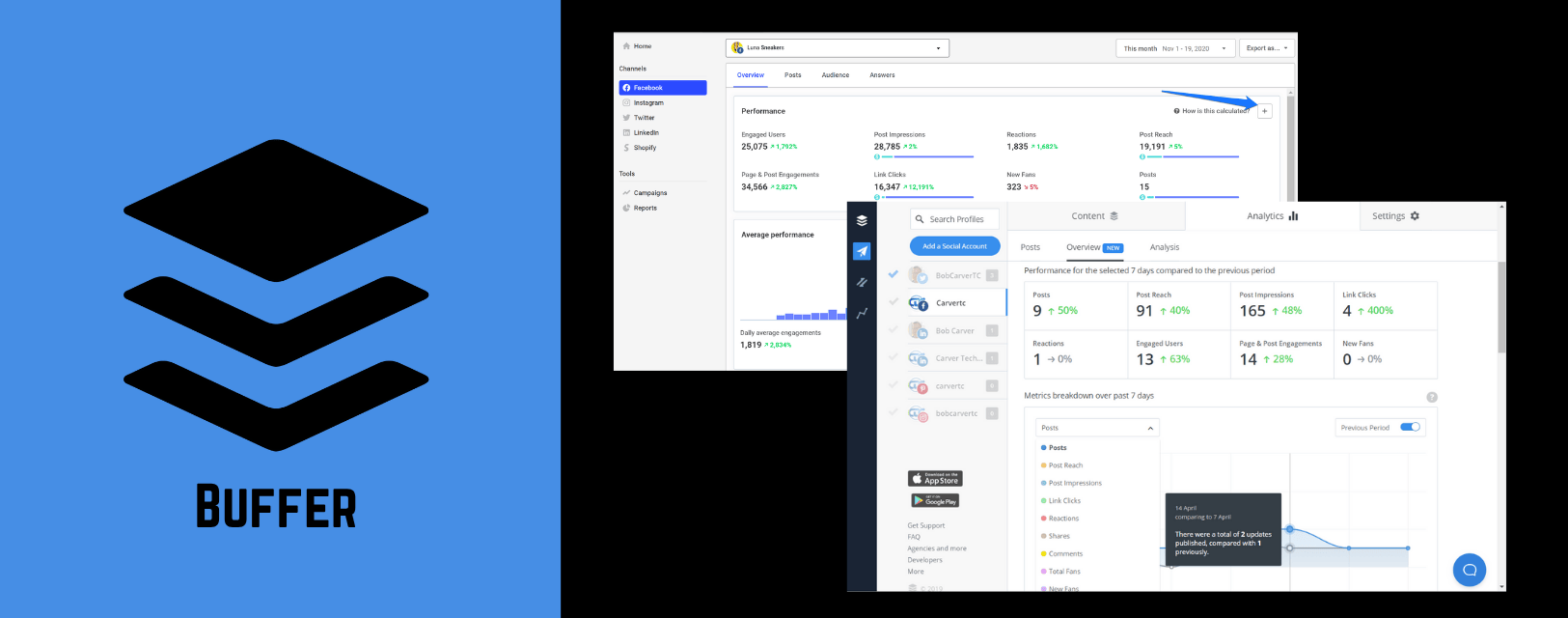
Buffer has been around for a while, and it’s earned a spot as one of the go-to tools for social media scheduling. It’s simple, easy to use, and helps you stay consistent without being glued to your screen all day.
Whether you're posting to Instagram, Facebook, LinkedIn, or X, Buffer makes it easy to plan your content, set it up in advance, and keep things running smoothly—even on busy days.
For example, you want to schedule a week’s worth of Instagram posts while you're focusing on a product launch, and that’s where Buffer can take over the day-to-day posting. You just set it once, and it handles the rest—no reminders, no missed slots.
Pros of Using Buffer
- Simple, clean interface
No clutter. Just a dashboard that gets straight to the point, even if you're not super tech-savvy. - Multi-channel scheduling
Plan and publish posts across different platforms from one place. - Built-in analytics
Track how your posts are doing—see what’s getting clicks, likes, and shares. - Team collaboration tools
Add team members, assign roles, and approve posts before they go live. - AI post assistant
Get help writing captions or repurposing content with Buffer’s built-in AI tools.
Cons of Using Buffer
- Limited features on the free plan
You can only connect up to 3 channels and schedule 10 posts per channel unless you upgrade. - No inbox management
Unlike some competitors, Buffer doesn’t offer a unified inbox for replies and comments. - Basic reporting
Analytics are helpful, but not as deep or customizable as other tools in the same price range.
Buffer Pricing (as of 2025)
- Free – 1 user, 3 social channels, up to 10 scheduled posts per channel.
- Essentials – $6/month per channel (more posts + analytics).
- Team – $12/month per channel (includes team access).
- Agency – $120/month for 10 channels (ideal for agencies managing multiple clients).
Buffer is a great pick for creators, freelancers, and small teams who want a reliable way to plan and publish content without getting overwhelmed.
Sprout Social
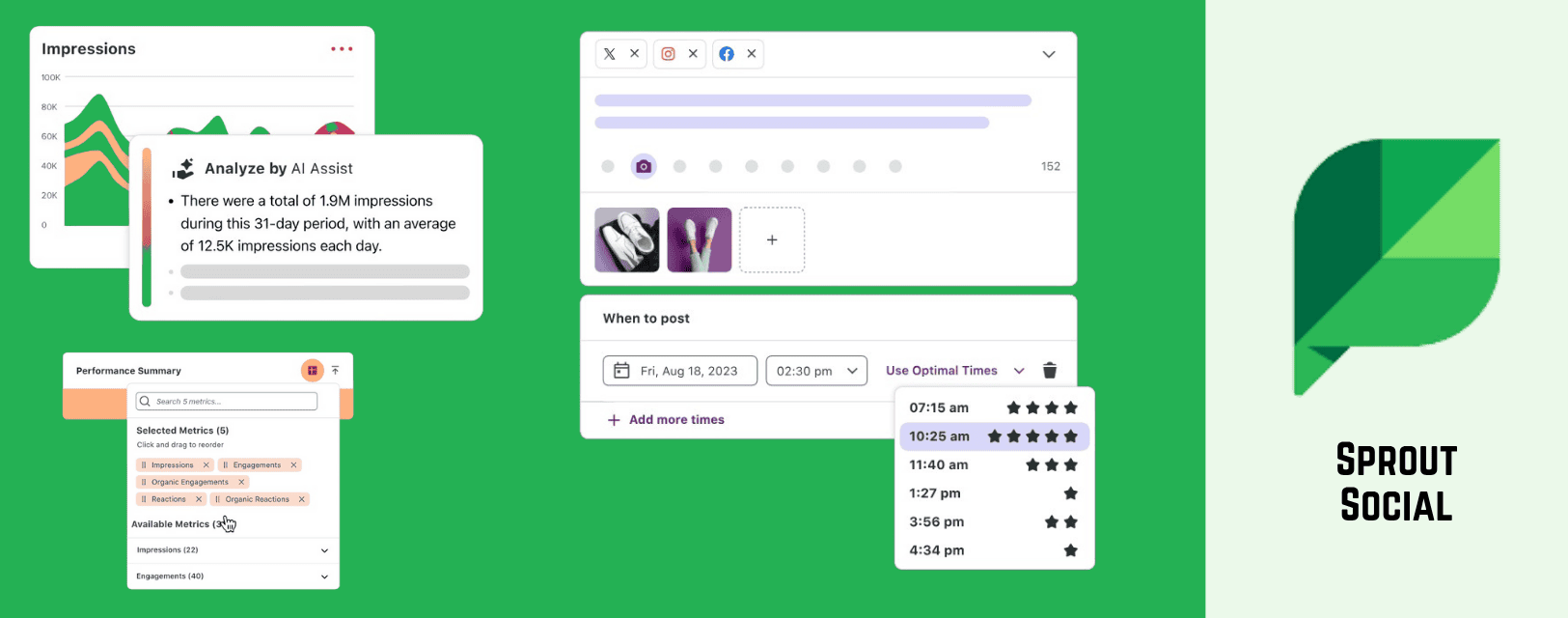
Sprout Social is built for people who need more than just a basic scheduler. If you’re looking for something that helps you organize, publish, track, and report—all in one place—this platform delivers.
It’s often used by teams that want to dig into performance without getting lost in spreadsheets. With tools for planning, posting, replying, and analyzing, Sprout Social brings structure to your social media workflow.
Some of its key features include data visualization, social promotion, automated publishing, and post scheduling. It also has a social performance management feature that enables marketers to easily measure how their social media campaigns perform over time.
Pros of Using Sprout Social
- Smart scheduling and auto-publishing
Line up your posts across channels and let the platform handle the timing. - In-depth performance tracking
Keep an eye on how your content performs with clear, visual reports. - Unified inbox
Manage comments, messages, and mentions from all your channels in one spot. - Collaboration-friendly
Ideal for teams—assign tasks, approve content, and manage workflows without confusion. - Custom reporting
Build reports that focus on the numbers that matter most to you or your clients.
Cons of Using Sprout Social
- Premium pricing
It’s one of the more expensive options, especially for smaller teams or solo users. - Feature-rich (but not always simple)
With so many tools in one place, it might feel overwhelming at first. - No free plan
You’ll need to start with a paid plan after the free trial ends.
Sprout Social Pricing (as of 2025)
- Standard – $199/month (5 social profiles).
- Professional – $399/month (unlocks reports, automation, and more profiles).
- Advanced – $499/month (adds AI tools, automation, and deeper analytics).
- Enterprise – Custom pricing.
While Sprout Social may not be the cheapest option, it’s often a strong pick for larger teams or agencies that need detailed tracking and all their tools in one place.
CoSchedule
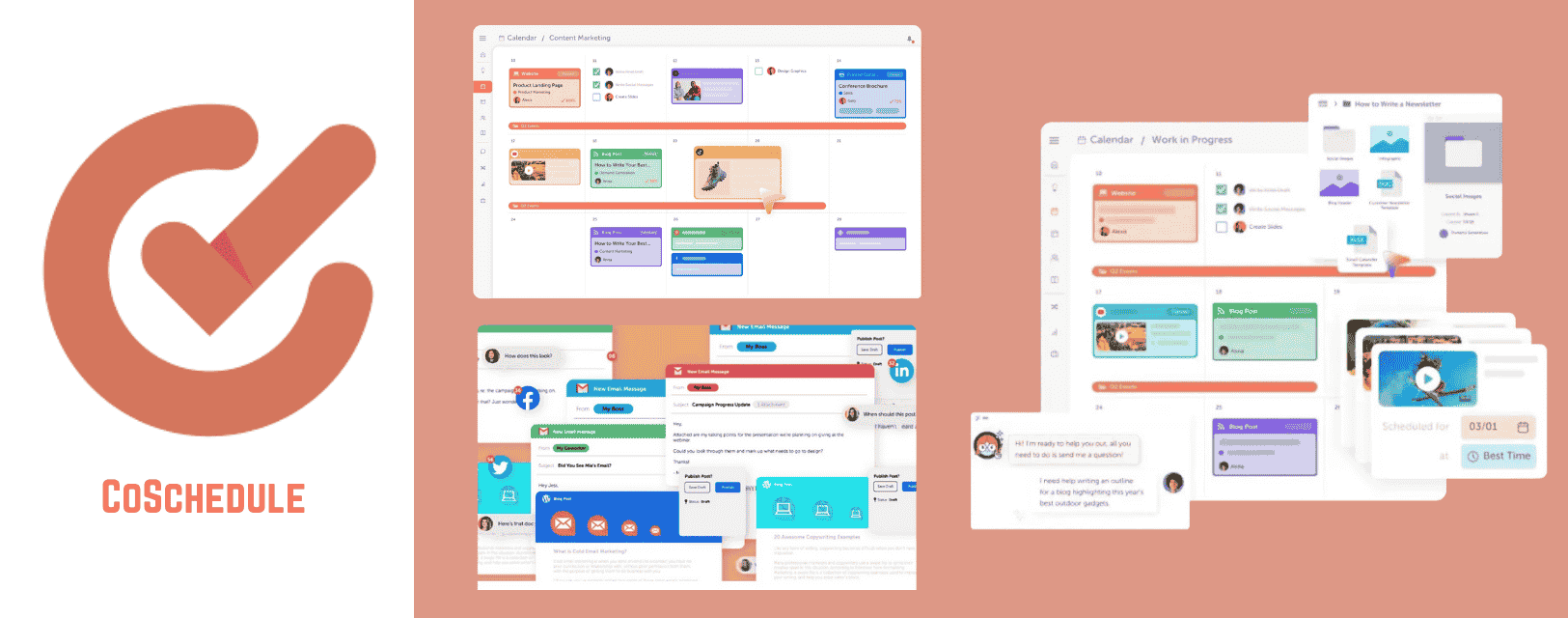
One of our clients runs a digital agency where their team manages blog posts, email campaigns, and daily social content for multiple brands. Before using CoSchedule, their process looked like a mess of color-coded spreadsheets, sticky notes, and endless Slack threads.
Once they switched to CoSchedule, they could finally see everything—social posts, blog drafts, tasks, and deadlines—organized in one clean calendar. Suddenly, the team wasn’t scrambling to meet deadlines or guessing who was working on what.
CoSchedule is a planning-focused automation tool designed for marketers who wear a lot of hats. It keeps content, campaigns, and tasks in sync, so nothing slips through the cracks.
Pros of Using CoSchedule
- Marketing calendar built for clarity
Organize your blog posts, social content, emails, and campaigns on one drag-and-drop calendar. - Team task management
Assign tasks, add deadlines, and track progress—all without bouncing between different apps. - Campaign coordination made easier
Map out full marketing efforts across channels, not just isolated posts. - Integrates with your stack
Works well with platforms like WordPress, HubSpot, Google Analytics, and more. - Content grouping
Keep related blog posts, social content, and promotions tied together so everyone stays on the same page.
Cons of Using CoSchedule
- Geared more toward full marketing teams
If you’re only looking to plan social posts, the other features might feel like more than you need. - Takes time to learn
Because it includes so many moving parts, it may take a little time to get used to how everything fits together. - Full social tools locked behind upgrades
The most useful scheduling features come with the higher-tier plans.
CoSchedule Pricing (as of 2025)
- Marketing Calendar – Starts at $19/user/month.
- Marketing Suite – Custom pricing for teams that need extra tools for planning, workflows, and content collaboration.
If you’re running a busy team and want one place to manage everything without the usual stress, CoSchedule helps you stay organized and ahead of the game—without needing five tools to do one job.
ContentStudio
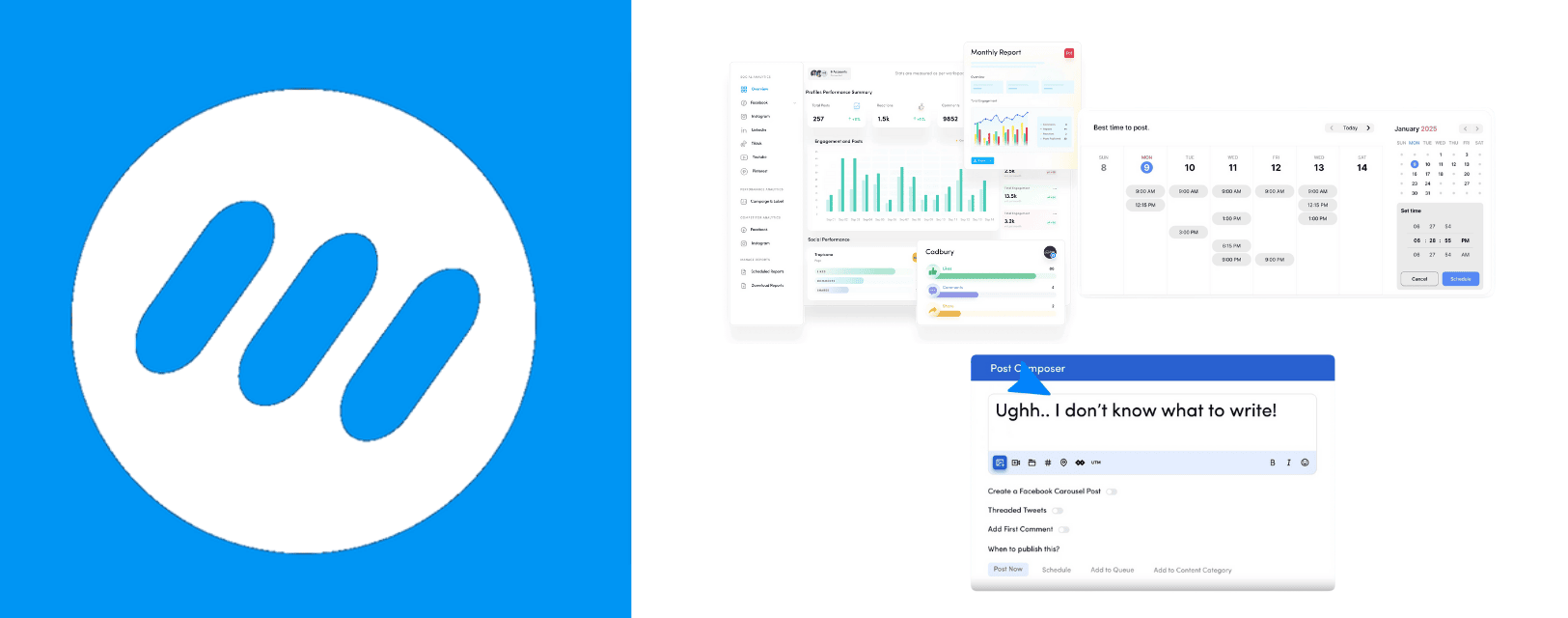
Ever tried juggling five social accounts while also writing captions, replying to messages, and figuring out what to post next?
Yeah, it’s a lot.
That’s why tools like ContentStudio exist. It’s like the calm, collected assistant you wish you had—quietly handling your scheduling, content ideas, and even writing suggestions while you focus on everything else.
One user on G2 put it perfectly:
“ContentStudio’s ability to schedule and plan content (with previews) is second to none… It makes posting across multiple channels super easy.”
Makes sense why so many small agencies and solo creators love it. You don’t need a 10-person team to look like you’ve got it all together.
With features like:
- AI caption writing
- A drag-and-drop content calendar
- Smart content curation
- And bulk post scheduling
…it helps you stay consistent without having to start from scratch every time.
So if social media has been feeling more like a chore than a strategy, this might be the tool that helps you breathe again.
Pros of Using ContentStudio
- Multiple calendar views
Switch between list and calendar views depending on how you like to work. - AI support
Generate captions, suggest images, and even rewrite posts to fit different tones or platforms. - Content discovery and RSS automation
Find trending topics or pull in content from your favorite blogs to fill up your queue. - Bulk scheduling and drag-and-drop planning
Schedule hundreds of posts at once, and easily shift them around using the visual calendar. - Built-in reporting
Schedule reports and monitor performance by platform or campaign.
Cons of Using ContentStudio
- Limited mobile inbox support
The social inbox doesn’t work fully on iOS devices. - No social listening features
You can schedule and track—but you can’t monitor brand mentions directly. - Feature access can be restricted
Some newer features (like AI content tools) are only available on higher-tier plans.
ContentStudio Pricing (as of 2025)
- Starter – $25/month
- Pro – $49/month
- Agency – Custom plans, typically up to $300/month
ContentStudio is a strong pick for content-heavy users who want automation, planning, and analytics wrapped into one platform—without a steep learning curve.
Post Planner

If you’ve ever found yourself scrambling to post something—anything—just to keep your feed alive, you’re not alone.
That’s where Post Planner comes in. It’s a straightforward tool that helps you stay consistent without needing a complicated setup. Whether you're managing content for yourself or for a small brand, it gives you just enough power to plan ahead, stay organized, and keep your posts flowing.
From finding content that’s already trending to setting up repeat queues for your go-to updates, Post Planner helps take the guesswork (and the last-minute panic) out of social media. It's simple, clean, and built for people who’d rather spend less time stressing over their next post—and more time doing what they actually enjoy.
Pros of Using Post Planner
- User-friendly layout
Easy to learn, even for beginners. Everything is built around simple workflows. - Post recycling and queues
Create content buckets that keep your posts rotating on autopilot. - Quick design tools
Edit images directly in the platform with stickers, filters, and text overlays. - Content search
Discover trending articles, images, and video to boost your reach. - Solid support
Quick response times from the support team when issues come up.
Cons of Using Post Planner
- Crowded calendar interface
The visual calendar doesn’t support drag-and-drop adjustments. - Limited advanced features
No in-depth reporting, social inbox, or team collaboration tools. - Strict refund policy
No refunds—even if you don’t end up using the software.
Post Planner Pricing (as of 2025)
- Starter – $11/month.
- Pro – $29/month.
- Growth – $69/month.
- Free Plan – Limited functionality; not ideal for professional use.
Post Planner is a good match for solopreneurs or professionals looking for something simple, affordable, and reliable for regular posting.
SocialBee
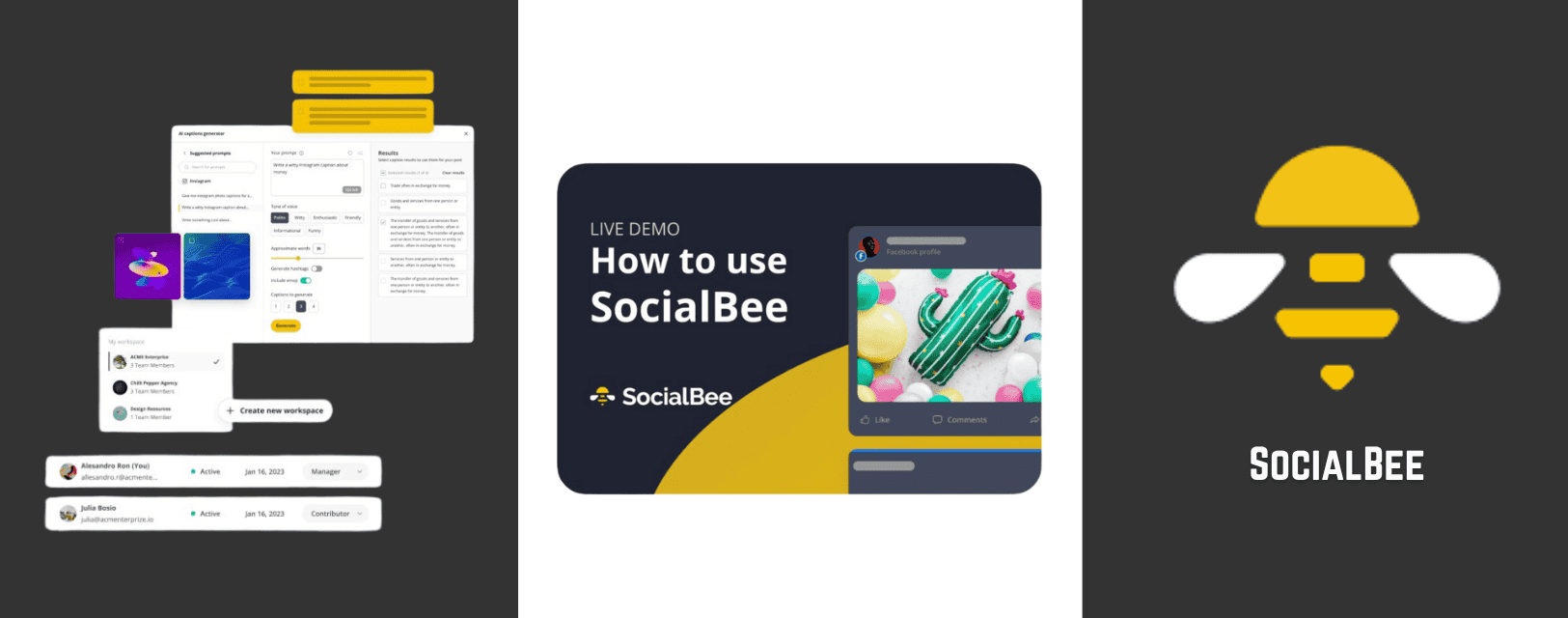
SocialBee is a versatile platform designed to help you stay organized, consistent, and less overwhelmed when managing your social media. It gives you control over how and when content is shared, with tools built for structure and planning.
Suppose you need to post tips on Mondays, testimonials on Wednesdays, and blog posts on Fridays—SocialBee lets you create categories for each, set custom rules, and automate the entire schedule.
You can even bring those posts back into rotation without rewriting a thing.
Pros of Using SocialBee
- Content categories and recycling
Organize posts by type and reuse them on a custom schedule—perfect for evergreen content. - Bulk tools and RSS integration
Upload posts in batches, pull in new content from RSS feeds, and make quick edits when needed. - Post previews and link customization
See exactly how your post will look before it goes live, and use branded links for a more professional touch. - Notifications and alerts
Get updates for missed posts, empty queues, or media issues so you can stay on track. - Separate workspaces
Manage different brands or clients with their own schedules and settings.
Cons of Using SocialBee
- Slight learning curve
Setting up categories and schedules takes a little time, especially if you’re used to simpler tools. - Design support is minimal
You’ll still need to use outside tools to create visuals and graphics. - Mobile limitations
Some features work better on desktop than on mobile.
SocialBee Pricing (as of 2025)
- Bootstrap – $29/month (1 user, 5 social profiles).
- Accelerate – $49/month (1 user, 10 social profiles, extra features).
- Pro – $99/month (3 users, 25 profiles, workspaces for clients).
- Agency Plans – Starting at $179/month (includes additional users and client management tools).
If you want a tool that helps you plan smarter, reuse content effectively, and keep your calendar full without the daily scramble, SocialBee is worth checking out.
Sendible
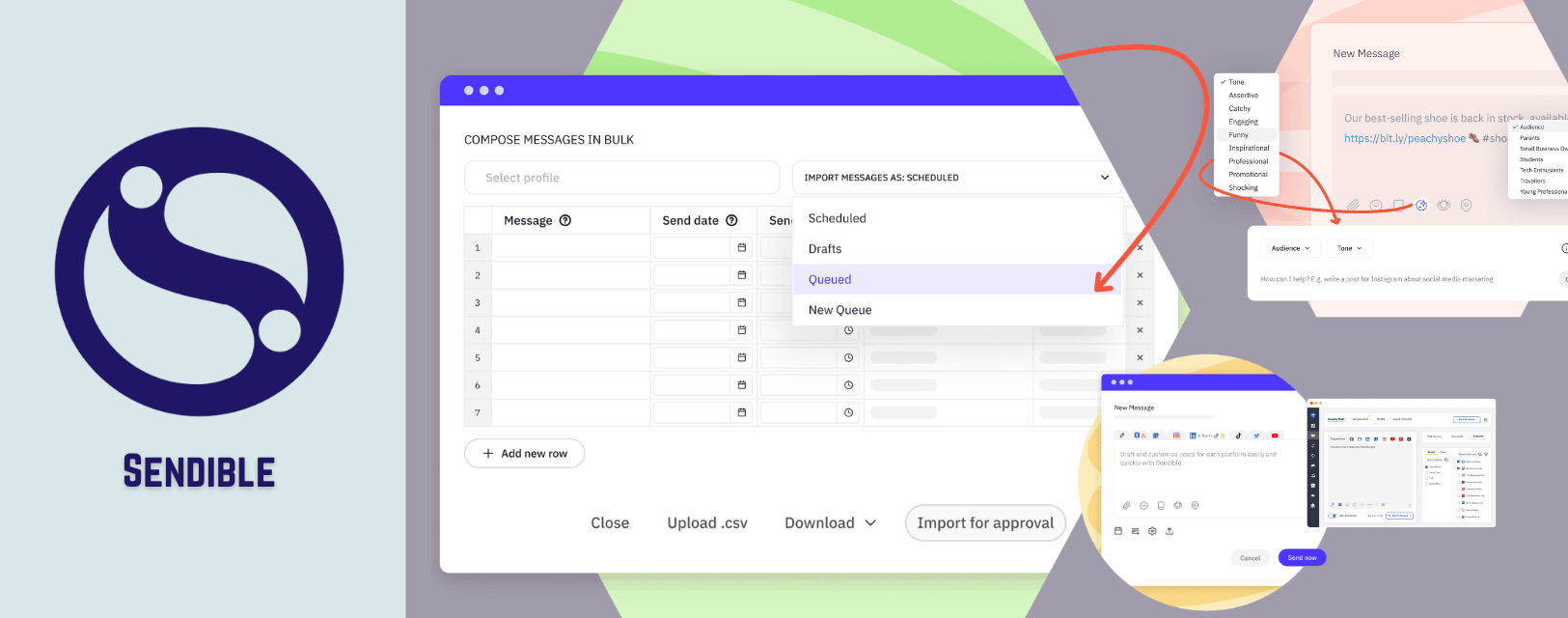
Sendible is built for people managing multiple brands, platforms, or clients—especially when there's a need for remote collaboration. It brings together key tasks like scheduling, reporting, and content planning, so you can run everything from one dashboard.
Suppose you need to monitor what your competitors are posting, track results from a campaign, and coordinate with a team spread across locations—Sendible makes it easier to handle all of that without switching between tools.
It’s especially helpful for agencies and teams juggling several accounts at once.
Pros of Using Sendible
- Centralized dashboard
Manage different brands, monitor trends, and respond to messages—all from one place. - Post scheduling and planning
Set posts to go live at optimal times across platforms like Facebook, Instagram, X, LinkedIn, and YouTube. - Content curation tools
Discover and share relevant content quickly using built-in RSS and keyword feeds. - Collaboration-ready
Designed for teams—assign tasks, set user permissions, and streamline your workflow. - Reporting and performance tracking
Create professional-looking reports with insights on reach, clicks, engagement, and more.
Cons of Using Sendible
- Interface takes time to adjust to
There’s a lot packed in, which may feel a bit busy at first. - Pricing based on services, not users
Adding more services (like profiles) can get expensive if you're managing many accounts. - Mobile app has limits
Some features are easier to access and use on desktop.
Sendible Pricing (as of 2025)
- Creator – $29/month (1 user, 6 profiles).
- Traction – $89/month (4 users, 24 profiles).
- Scale – $199/month (7 users, 49 profiles).
- Advanced - $299/month (20 users, 100 profiles).
- Enterprise – $750/month (80 users, 400 profiles).
If you're managing content for multiple brands or clients and want a tool that brings planning, teamwork, and analytics into one space, Sendible is a solid option to consider.
MeetEdgar
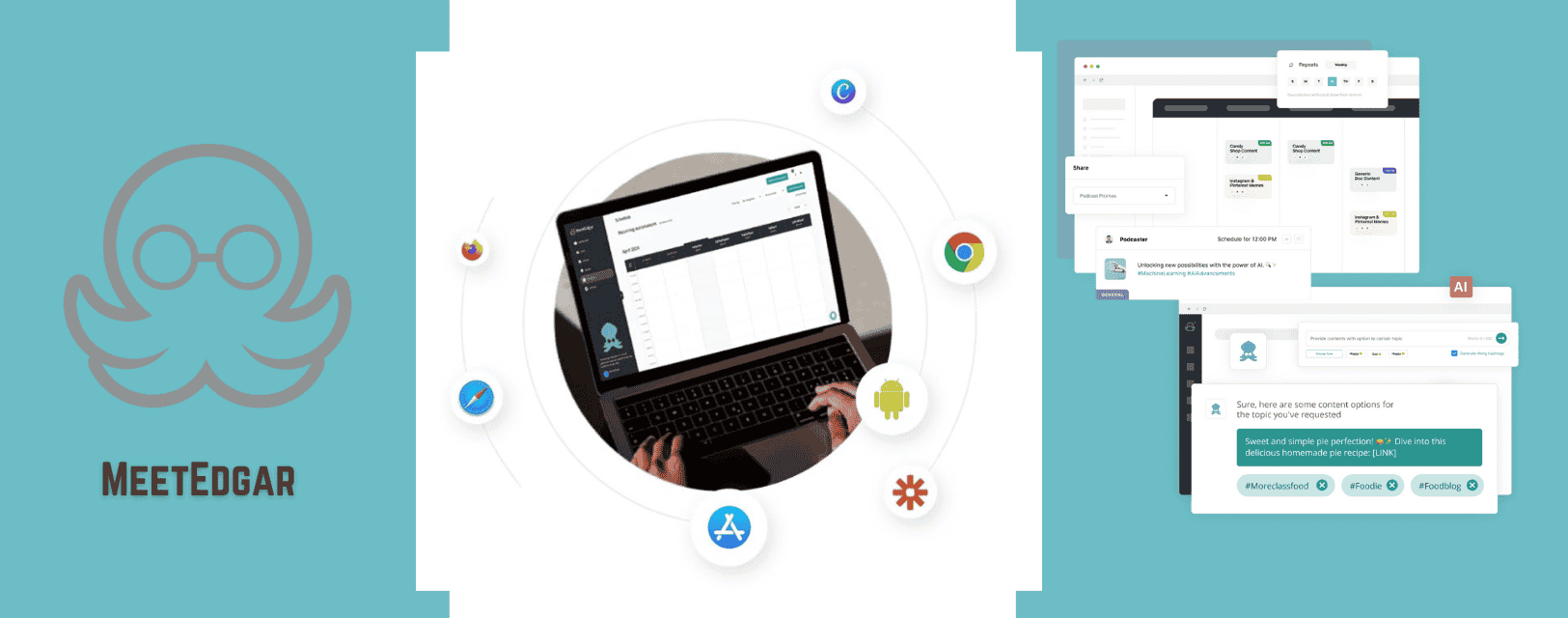
MeetEdgar is built for people who want their social content to keep working—even when they’re not online. Instead of constantly writing new posts, it helps you reuse, organize, and schedule your content so you can stay active without starting from scratch every time.
Suppose you need to share a mix of blog posts, tips, and customer stories every week. With MeetEdgar, you can group those by category, schedule each one at the right time, and let the system cycle through your content automatically.
It’s especially useful for businesses or solo creators who want to keep their feeds fresh without having to log in every day.
Pros of Using MeetEdgar
- Category-based scheduling
Organize posts into themes—like quotes, blogs, or promotions—and set them to repeat on custom schedules. - Content recycling
Edgar automatically reuses evergreen content, so your best posts keep reaching new eyes. - Post variation generator
Helps you turn one update into multiple versions using AI suggestions. - Performance insights
Track which posts get the most clicks, shares, and engagement. - Browser extension
Save articles and links from anywhere on the web directly into your content library.
Cons of Using MeetEdgar
- Limited design tools
It doesn’t include built-in visual editors—so you’ll need a separate app for creating images or graphics. - Simpler interface, fewer features
Compared to larger platforms, it focuses mainly on automation and scheduling rather than team features or advanced analytics. - No mobile app
The platform is web-based only, so it’s not ideal if you rely on mobile workflows.
MeetEdgar Pricing (as of 2025)
- Eddie Plan – $24.91/month (5 social accounts, unlimited scheduled posts).
- Edgar Plan – $41.58/month (25 accounts, advanced analytics, team features).
MeetEdgar is a good fit for anyone who wants to get more mileage out of their content and stay consistent without the daily time crunch.
Loomly
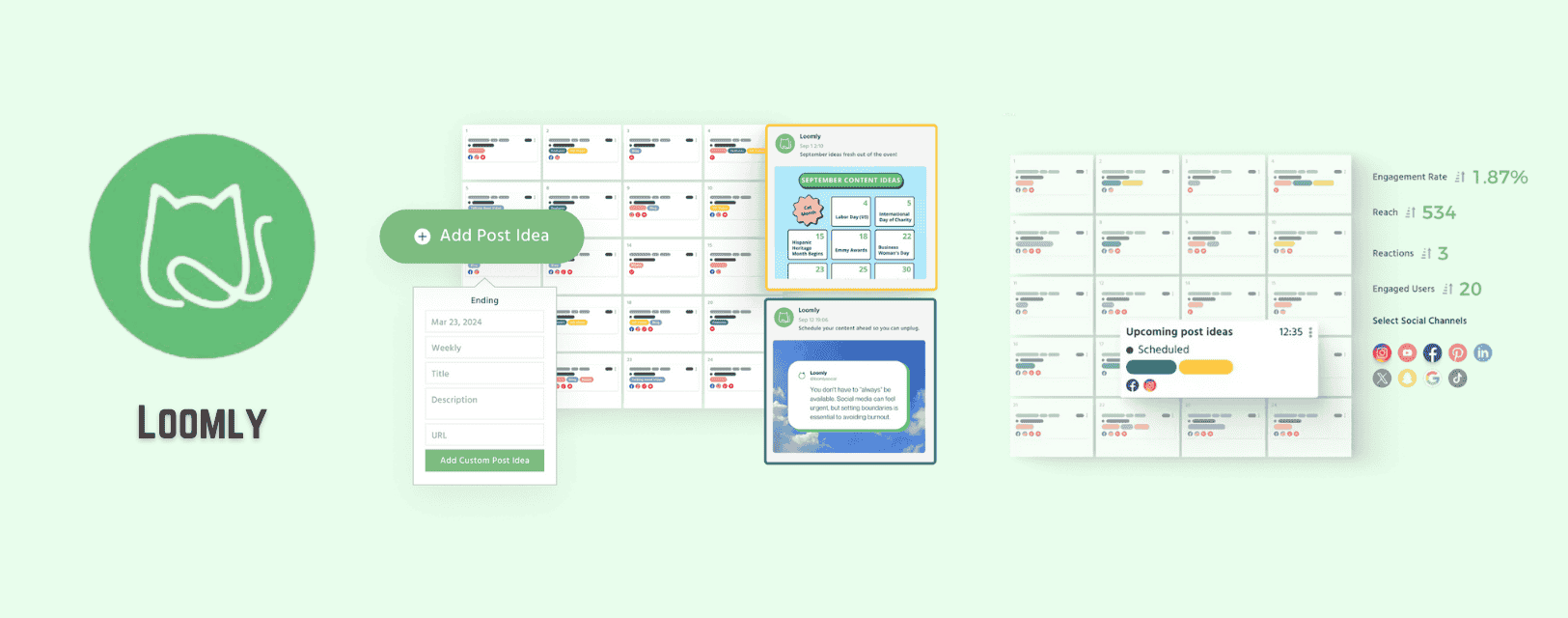
There’s this moment that happens far too often in content teams.
You’re in a group chat. Someone’s asking, “Hey, which version of the Instagram post are we using?”
Someone else drops a Google Doc link from two weeks ago.
Another person swears they uploaded it to the shared folder—but wait, there’s no caption.
Meanwhile, your calendar looks like it’s been organized by a raccoon with a Wi-Fi password.
That’s the chaos Loomly was made to calm.
It’s a social media automation tool for people who don’t want to live inside spreadsheets or Slack threads. It brings everything—planning, approvals, post previews, performance tracking—into one space that actually makes sense.
You get one clean calendar, built-in collaboration, and the confidence that the post going live on Thursday at 10 a.m. is the right one.
If you’ve ever had to chase down a caption in five different tabs, you’ll appreciate how Loomly helps you keep your sanity—and your schedule.
Pros of Using Loomly
Unified calendar view
See everything at a glance—what’s going live, what’s pending, and what still needs attention.
Collaborative tools
Assign tasks, track progress, and keep your team aligned on one platform.
Content inspiration
Built-in post ideas help when you’re short on content or need a quick prompt.
Post previews and optimization tips
Make sure every post looks right before it’s published.
Simple scheduling across platforms
Set and forget your posts across LinkedIn, Facebook, Instagram, and more.
Cons of Using Loomly
- No free plan
You’ll need to subscribe from the start—no fully free tier to test long-term. - Analytics may feel light
For advanced users, the data may not go as deep as other platforms. - Learning curve for power users
While it’s beginner-friendly, mastering the full range of features can take time.
Loomly Pricing (as of 2025)
- Base Plan – $65/month.
- Advanced Plans – Range up to $332/month (includes custom branding, larger team access).
Loomly is best for creators and teams that want visual planning and collaboration without getting buried in complex features.
Why Should You Use Social Media Automation Tools?
The truth of the current digital marketing world is—managing social media every day can eat up more time than it should and you need to work on that if you want to beat your competitors.
Everyone in this current market climate of AI and automation tools, searching for the most optimized way to handle their social media platforms in any way possible to reduce time consumption and cost!
You’re writing captions, checking analytics, responding to comments, planning next week’s posts… and before you know it, you’ve lost half your day. That’s where you need try the latest and trendy social media automation tools.
Think of it like putting certain tasks on autopilot—so you can focus on the things that actually need you.
⮚ Save time without dropping the ball: Instead of logging in every day just to publish a post, you can schedule a week (or month) of content in one go and let the tool handle the rest.
⮚ Stay consistent, even on busy days: Whether you're out sick or juggling a launch, your content still goes out right on time.
⮚ Need specific features: Further, some social media automation tools offer features that can help you increase engagement and social listening or influencer marketing. This is why these tools are among the must-have software for small businesses and large enterprises.
⮚ See what’s working (and what’s not): Many tools offer simple reports to help you spot which posts are doing well and which ones are just… taking up space.
⮚ Find gaps and plan smarter: Some platforms even suggest what kind of content to post next or when your audience is most active.
⮚ Manage more, without the burnout: If you’re running multiple accounts—or managing a team—automation helps you keep it all in order.
How Are Social Media Automation Tools Different From Other Social Media Platforms?
Besides helping businesses automate different social media marketing tasks, these automation tools are generally known for helping marketing teams track, monitor, and analyze their social media activity. This can include marketing activities like identifying trends, generating free leads, measuring market reach, and analyzing engagement.
If you search properly, you'll also find some platforms out there that help you manage all your social media accounts, including groups, communities, pages, profiles, and everything from one place. These are usually called social media management tools. While they’re helpful for keeping things organized, they often don’t go as far when it comes to automation.
Then there are tools built for more specific jobs—like designing graphics, running ad campaigns, or planning out content ideas. Have you heard about Canva or tried it? One of those tools that can solve all your content-related problems for your social media platforms.
Some are even made with small businesses in mind (SMEs implement their social media marketing strategies), giving them a simple way to stay active online without needing a big team or fancy setup.
The Bottom Line
There you go—some of the most trending and solid social media automation tools to help you take some of the pressure off your social media routine in 2025. Just like other business automation tools, social media automation solutions can help you save time and allow you to better focus on other aspects of your business.
Doesn't really matter if you’re managing one brand or a handful of clients, with the right type of automation, you can easily stay consistent without living online 24/7.
While Groupboss is the perfect suit for lead collection from your social media platforms, tools like Hootsuite and Buffer work well if you want everything in one spot. CoSchedule and Sendible are a better fit if you’re after structure and extra planning features. And if content recycling is a priority, SocialBee and MeetEdgar are strong picks to keep your feed fresh with less effort.
The main thing is - it is up to you! You have to understand what type of automation you want based on where you want to optimize your social media management time and cost. The faster you realize and spot on, the better would be the implementation of the tool.
At the end of the day, it’s about finding what fits your workflow and helps you save time without losing the human touch.
